Clothes lined with elastic band are not only practical and comfortable to wear, but also look more form-fitting. With the help of elastic band, you can create beautiful gathers on the fabric, as well as make unusual folds. However, before sewing it to the fabric, it is worth familiarizing yourself with the most convenient methods. After all, not all of them can be used on clothes of any cut and material.
- Where rubber bands are used
- Simple ways to sew in elastic bands
- With the help of a machine
- Manual method
- Basic rules for sewing on elastic bands
- Sewing rubber threads into a spool
- Basting elastic bands tightly
- Compression ratio of rubber
- Gathering with elastic band
- We sew elastic into the waistband of trousers or pants
- How to sew elastic to a dress waist
- How to sew elastic to panties
- Elastic band under the drawstring
- Using a hat elastic
- How to sew elastic into jeans at the bottom of the leg
Where rubber bands are used
Elastic bands are very often used in sewing clothes and even bed linen.
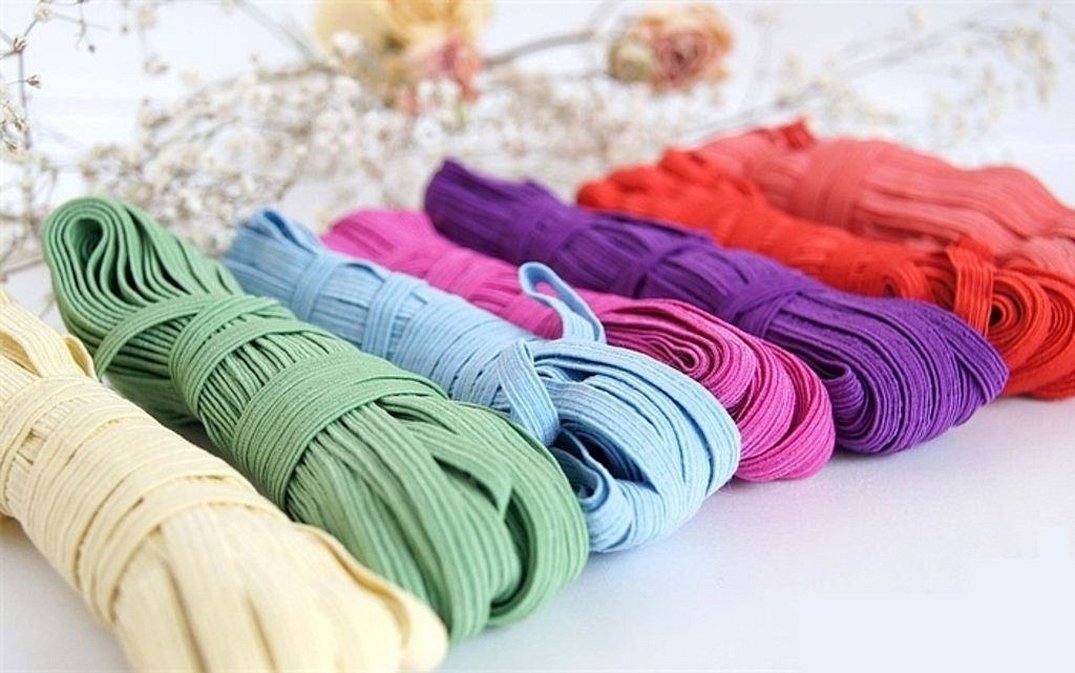
Often they are used to treat the edges of mattress pads and sheets for ease of use. But for clothing, elastic tape can be used in a variety of ways.
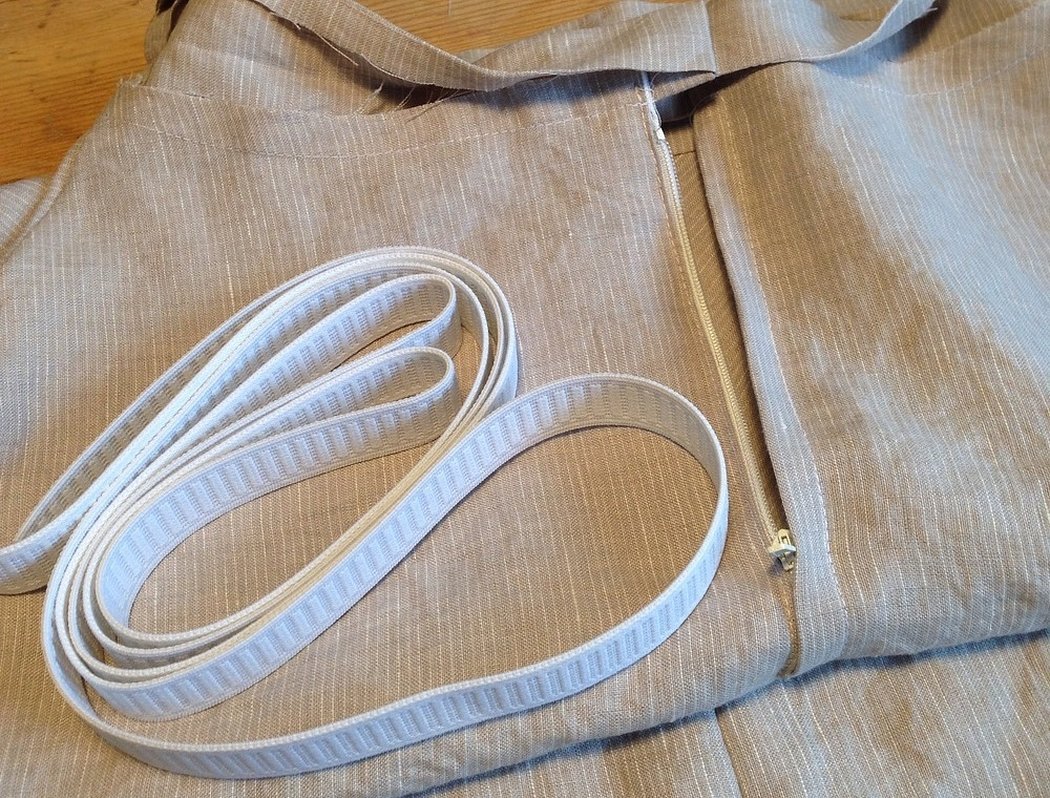
The rubber band is used for completely different purposes:
- supporting the waistband of clothing – skirts, trousers, shorts, some types of dresses;
- waist tightening on tops, dresses, blouses and sundresses;
- narrowing of sleeves and bottoms of trousers, blouses, shirts;
- sewing underwear and swimwear.
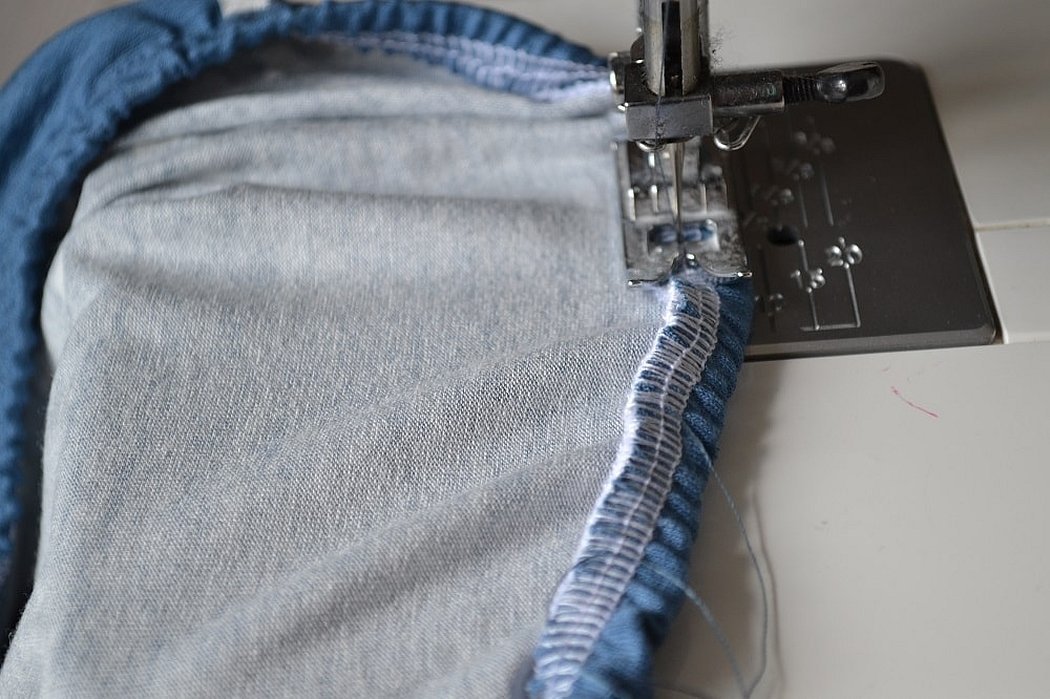
You can additionally sew an elastic band on any clothing for convenience or to make it look more beautiful. It is recommended to sew a regular elastic band on the shoulders, sleeves, waist, neck or under the chest. In this case, the clothing will acquire more precise reliefs and will beautifully fit the figure.
Simple ways to sew in elastic bands
Simple methods of sewing elastic into fabric include using simple stitches. This stitch can be done either by hand or on a sewing machine. However, in the latter case, it is most reliable to use a zigzag stitch.
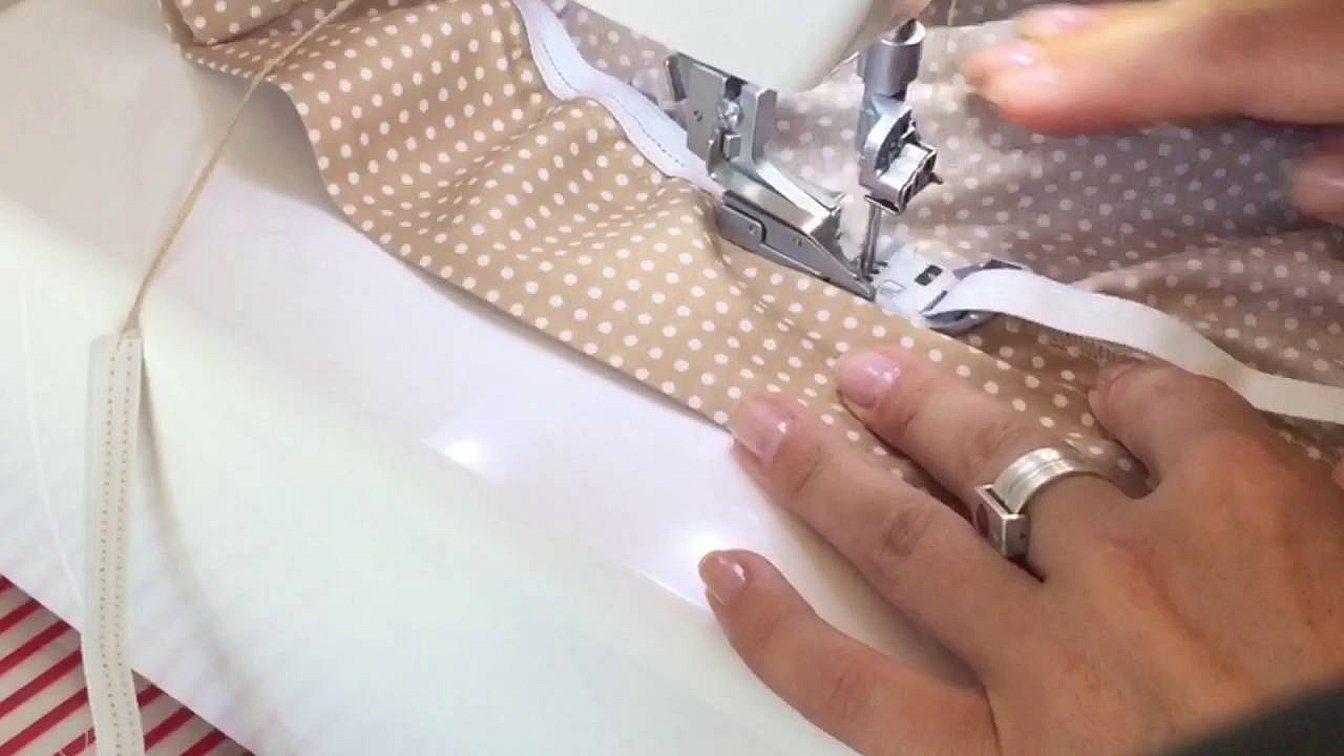
Please note! The zigzag stitch ensures good fabric tension without creating deformed areas.
With the help of a machine
Sewing in elastic using a machine is an easier method than doing it manually. It is better, of course, to use those devices that have many functions that help to facilitate and speed up the process. The most effective for this purpose are sewing machines of the brands Janome, Singer or Brother.
Using a sewing machine, elastic can be sewn into fabric in several ways:
- Basting. This can be done even on the most common machines. Before sewing the elastic to the fabric on the machine, you must first mark the line on it along which the sewing will take place.
- Zigzag. A very convenient method. You need to attach a circular stretch tape to the fabric with the same length and press it tightly with the machine foot. Before work, you need to set the zigzag size regulator to the maximum width.
- Drawstring or drawstring. Additionally, you need to prepare a separate strip of fabric so that it is slightly wider than the elastic band and reaches the length of the section of fabric to which it will be sewn.
- Bobbin or spool. In this case, they do not sew the elastic itself, but use special stretchy threads that are threaded into the machine along with regular threads.
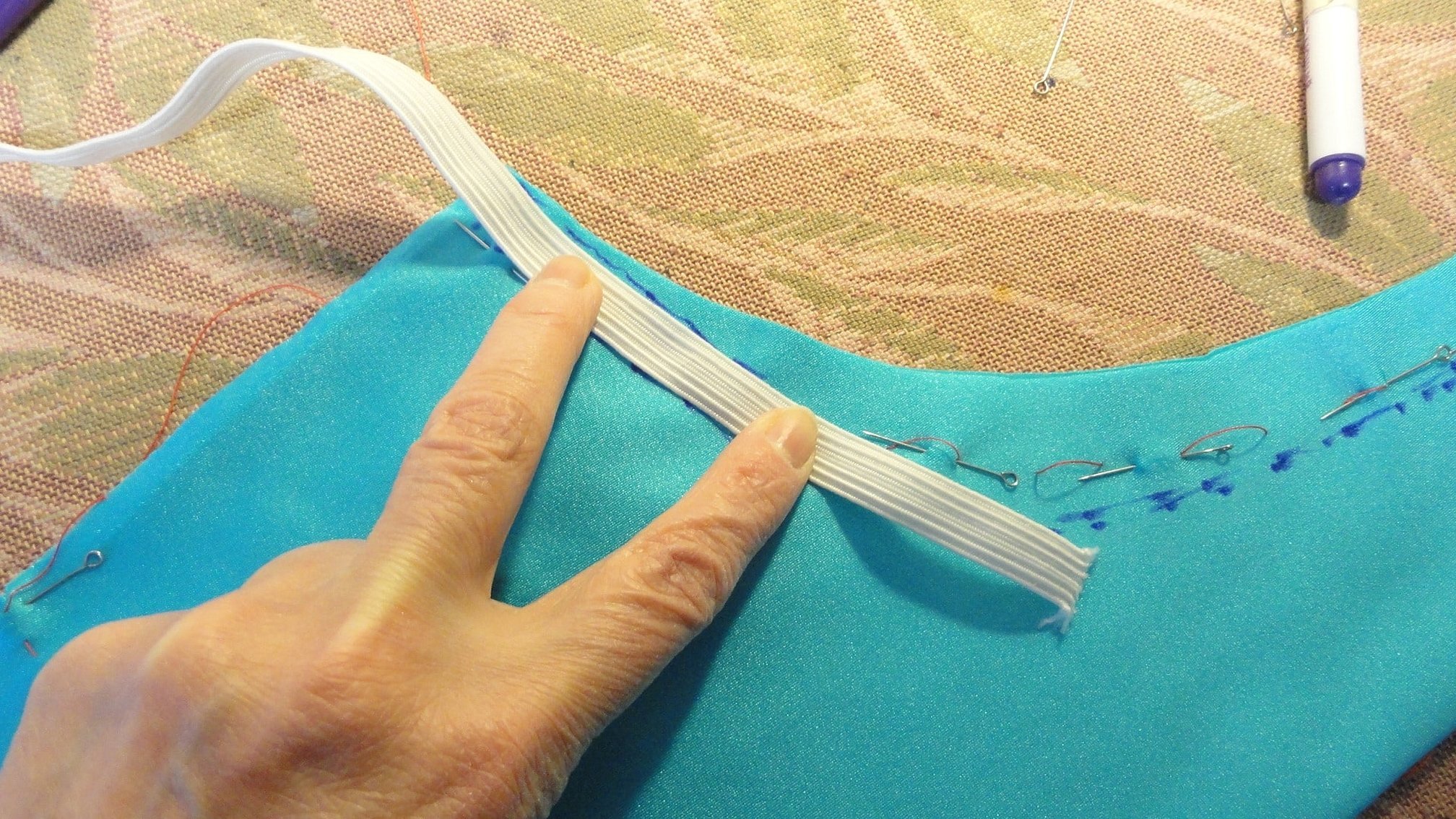
Manual method
You can sew the elastic manually not only with a regular straight stitch, but also with a zigzag stitch. To make sure everything is sewn evenly, you first need to divide the length of the fabric into several equal parts. Then apply the round elastic band and pull it out along the entire working length and secure it in the places indicated earlier. This method will make the work much easier, and you won’t have to redo it several times.
Basic rules for sewing on elastic bands
Since there are many ways in which elastic can be sewn into fabric, there are rules for each method.

Sewing rubber threads into a spool
It has already been mentioned above that this method is done with a machine and rubber threads. The finished work will stretch well and will not tear under strong tension. This method is good to use on fragile and stretchy fabrics: silk, knitwear, satin. But denim or thick cotton are unlikely to be suitable.
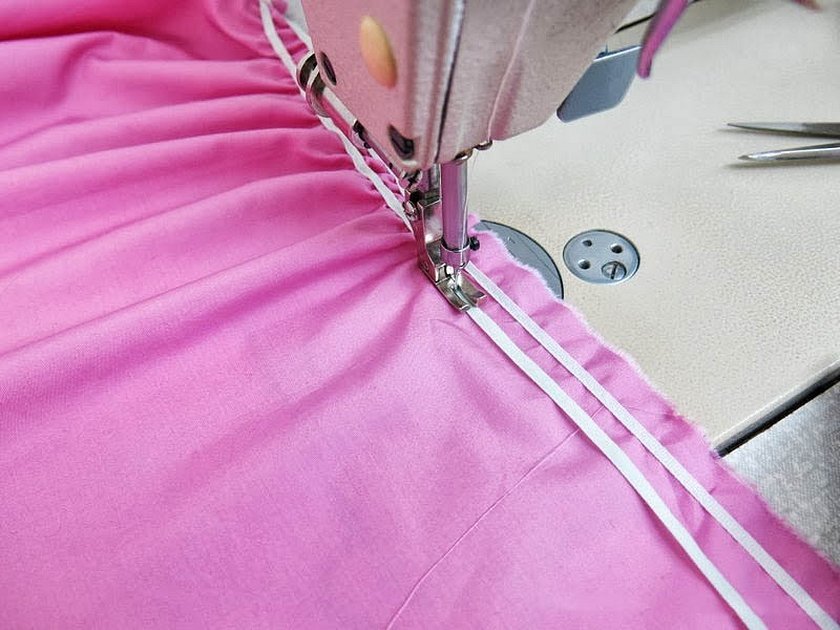
Before sewing, stretch threads should be threaded into a spool, and regular threads should be used as the other face thread. If sewing is done with a simple straight stitch, it is better to wind the fabric in several parts separately. This way, the shape of the finished garment will be uniform and symmetrical, it will not gather in folds in one place and stretch in another.
Basting elastic bands tightly
This method is used for clothes of complex structure and sewing, which have many details, folds and various assemblies. First, mark the line where the elastic will be sewn in, for example, at the waist or leg. Then divide the tape into two parts, one will be sewn in separately in the front, and the second in the back. At the end of the work, both ends are carefully and inconspicuously attached to each other on the sides. When sewing, the elastic can be pulled at your discretion.

For your information! The stronger the tension, the more noticeable and voluminous the folds will look.
Compression ratio of rubber
It is worth considering the thread compression coefficient, especially when gathering material on a large area of fabric. This method is widely used for processing belts and straps of skirts and trousers.
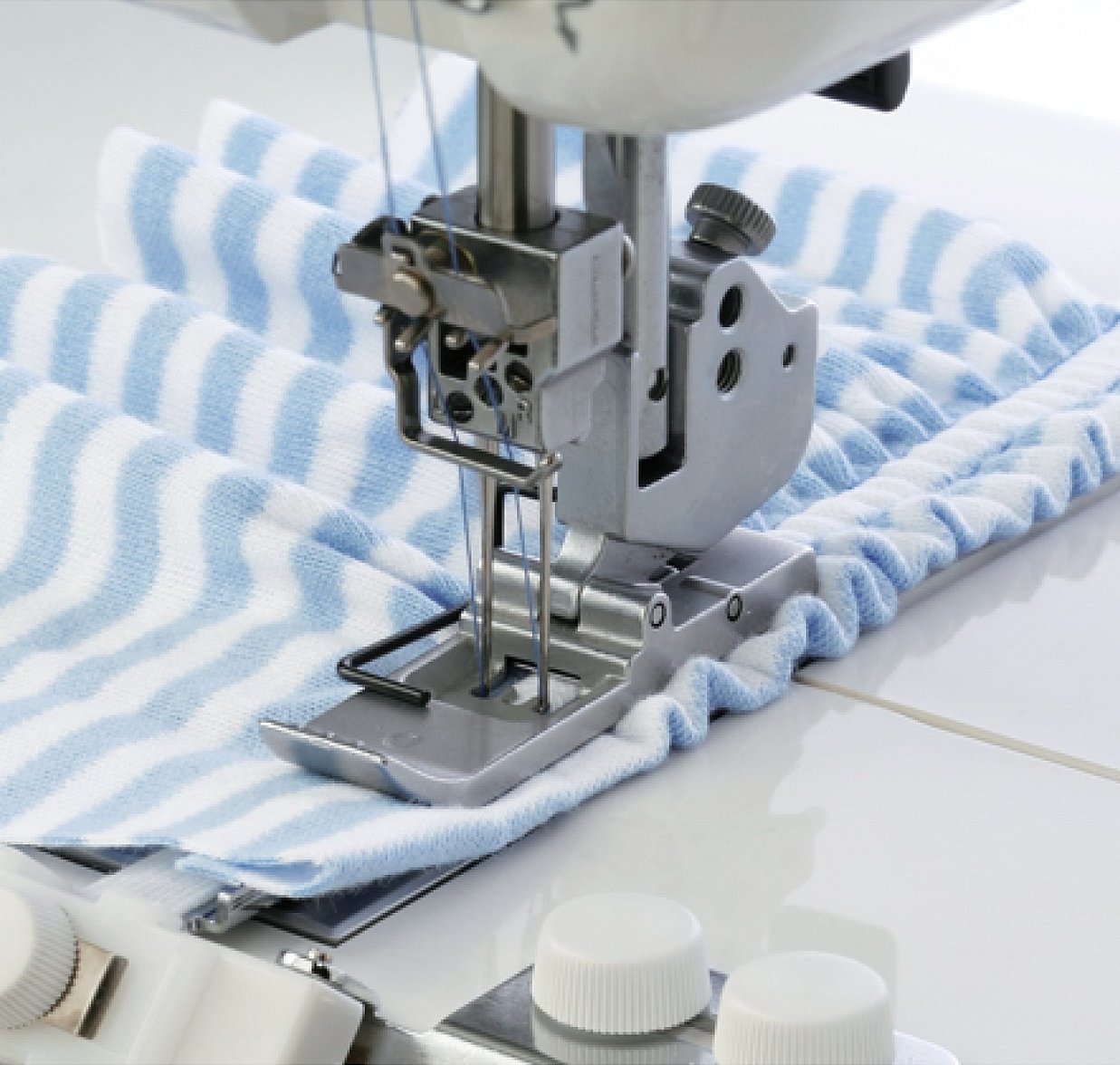
To measure the elastic compression ratio, first take a piece of fabric for testing. Then stitch to the end, turn the work 90 degrees and stitch the row again on the machine. During sewing, the fabric must be stretched, holding it with your hand. Then measure the resulting stitches and the distance. And then, if necessary, you can decrease or increase the width of the stitch.
Gathering with elastic band
It is recommended to gather dense materials or multi-layered clothing with elastic tape. Simply put, a regular elastic band is sewn onto it. Its width should not be less than 5 millimeters, otherwise it will not give a tightening effect on thick fabric. Elastic bands are sewn in several parallel rows.
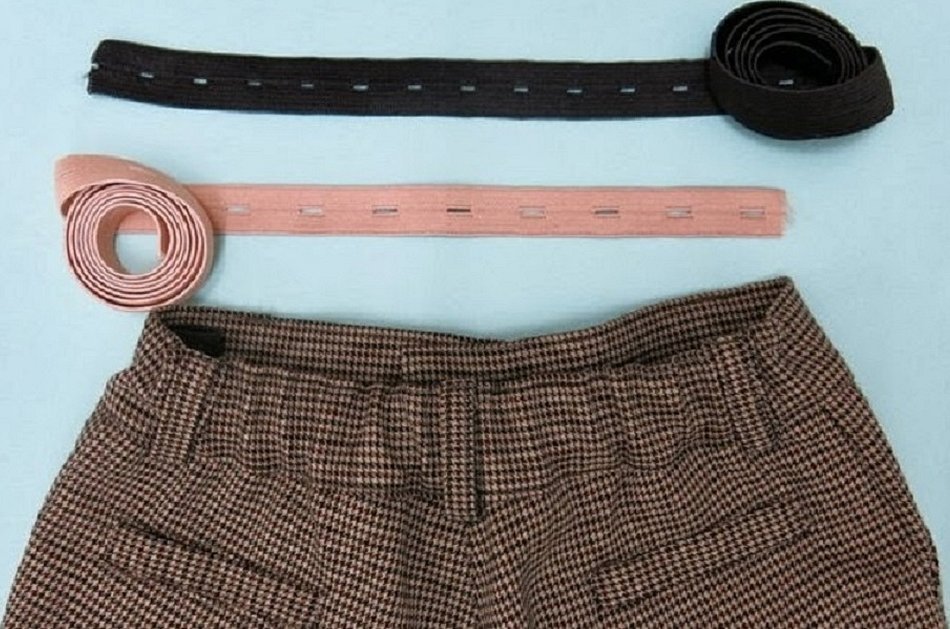
You need to place the elastic on the wrong side of the material and pull it from the bottom by its edge. You need to sew it with a straight regular machine stitch. To sew several elastic bands together, it is better to immediately draw the lines along which they will be attached, otherwise the final product will turn out crooked and deformed.
We sew elastic into the waistband of trousers or pants
Before sewing elastic into the waistband of trousers, it is worth noting that it is very difficult to do this manually. Therefore, if you do not have a machine, it is better to give the item to a studio.
On a sewing machine, sewing elastic into the waistband of trousers is done as follows:
- Take an elastic band at least 2 centimeters wide. To determine its exact length, first wrap it around your waist and pull it to the desired girth.
- On the machine, you need to set the “knit stitch” mode and set the interval on the scale to 3. Set the foot to zigzag.
- Connect the edges of the elastic band and stitch on the machine.
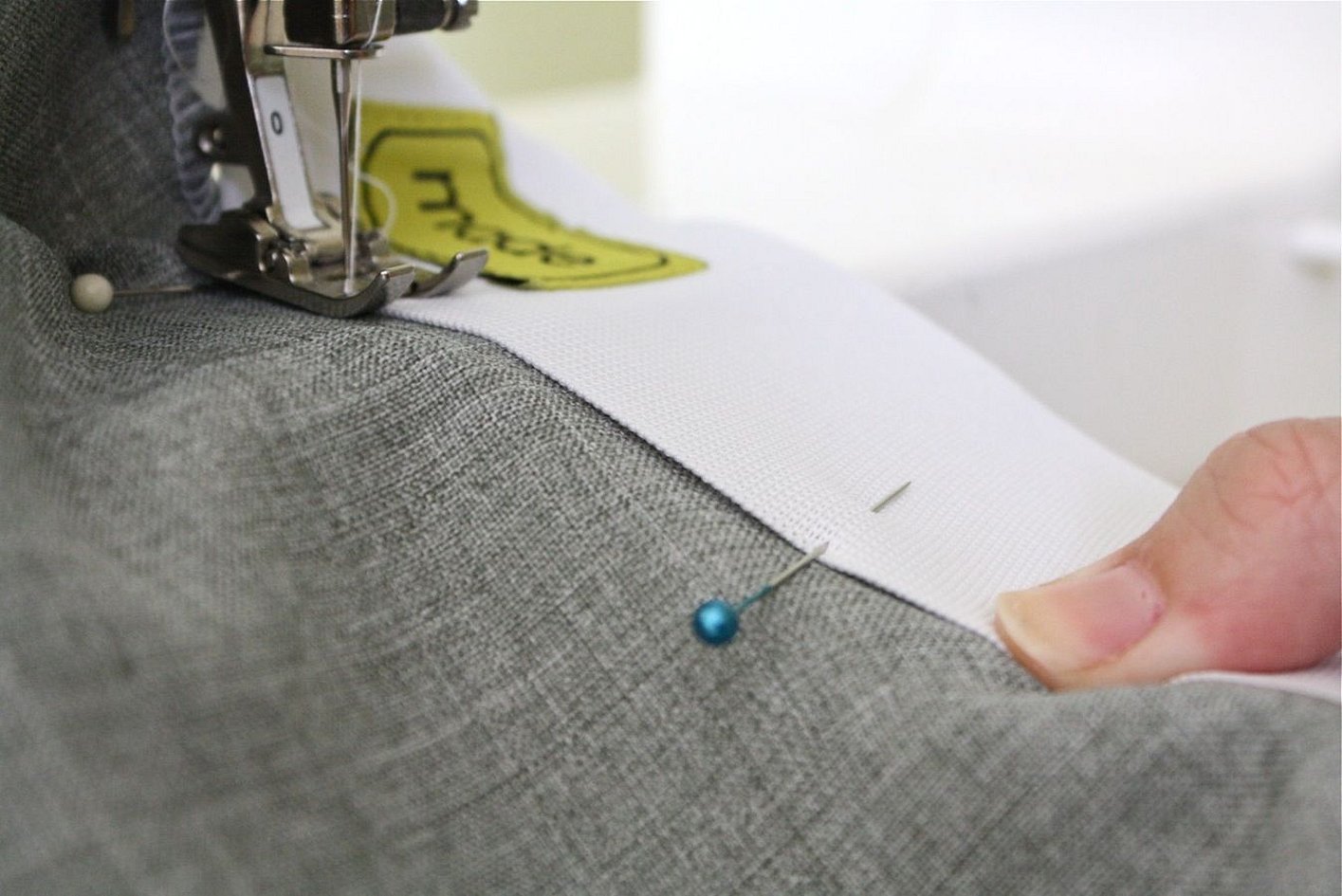
- Turn the trousers inside out and sew the elastic along the edge of the belt. To make sure it is sewn on evenly, you need to pin it to the belt in some places.
- Finish all edges so that the elastic band cannot come out of the seams. To do this, set the machine foot to the overcasting mode and select the overlock stitch.
- At the very end, it is recommended to set the foot to the normal sewing method and stitch the elastic from the bottom, stepping back 1–2 centimeters from the edge.
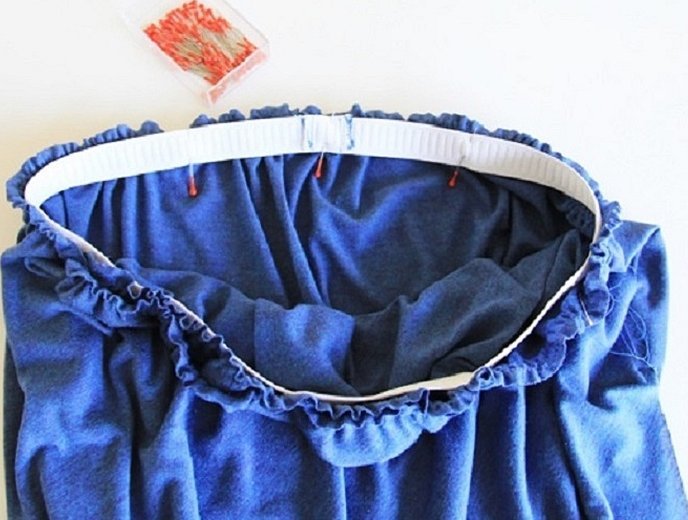
How to sew elastic to a dress waist
There are the same rules for both manual and machine sewing of elastic band into the waistband of a dress:
- You can't pierce the elastic band with sharp objects, as you can ruin it by deforming the rubber veins. That's why it is recommended to sew the band with a zigzag stitch rather than a straight stitch.
- When sewing, you need to stretch the elastic evenly. This will subsequently affect the gathering of the fabric of the finished product. In some areas it will be stretched, and in others, on the contrary, it will have many folds and gather densely.
Before sewing elastic into a dress at the waist, you need to familiarize yourself with the methods of doing this. You can sew it on manually, which is not very practical. However, you can use different modes of the sewing machine.
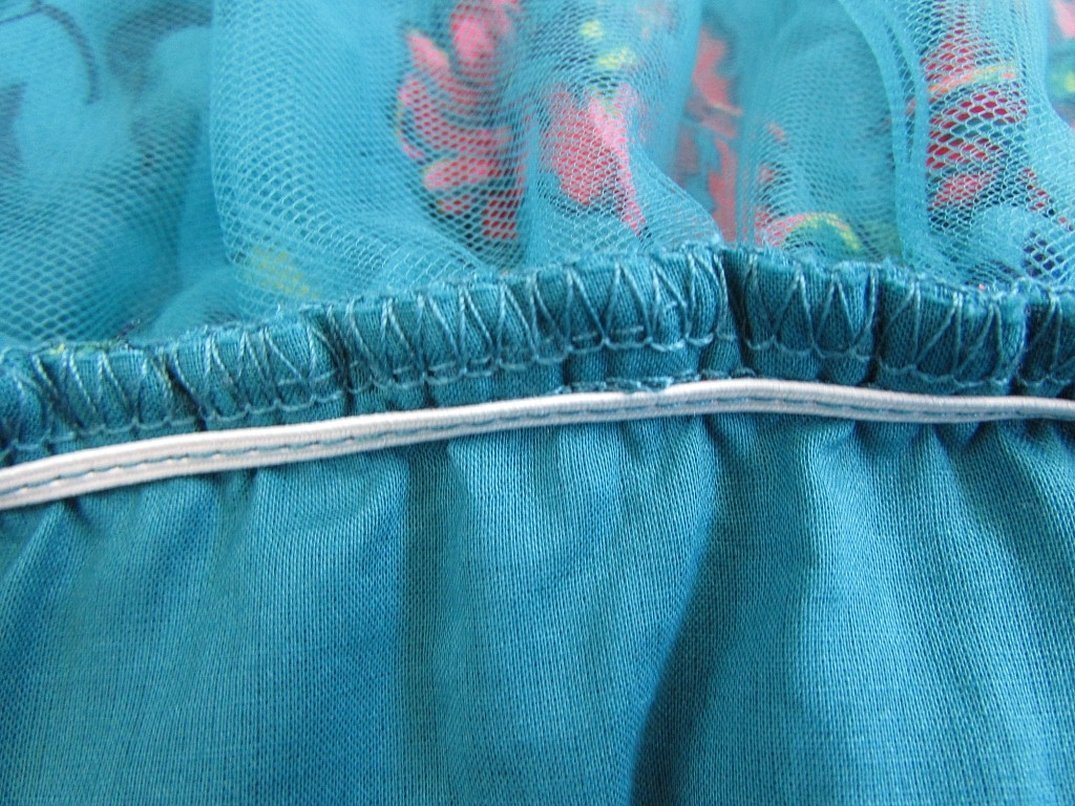
First, measure the elastic band, pulling it slightly around the waist. Then divide the waist area into 4 parts and mark with a piece of soap on the inside of the dress. Also divide the band itself. Attach all 4 marks to each other and stitch. Now you can stitch the remaining sections, pulling the fabric and elastic.
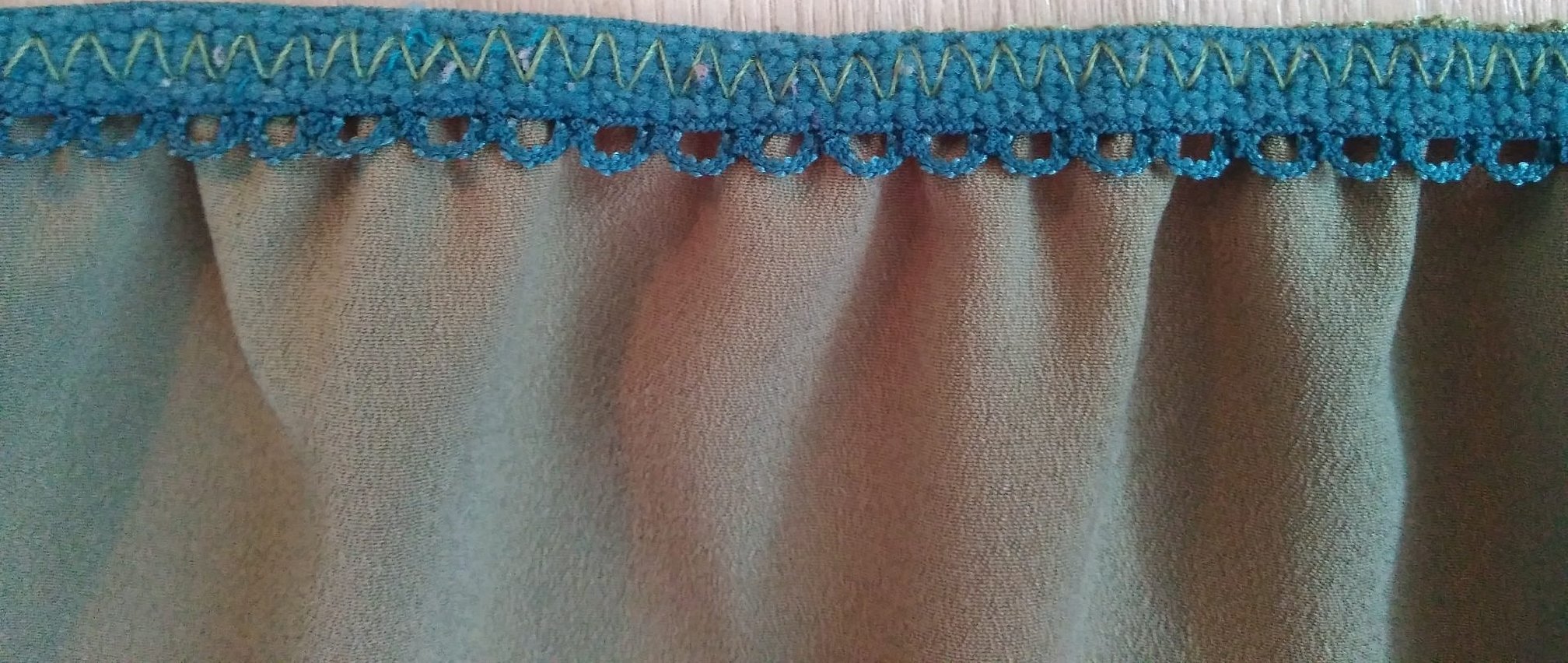
Important! If the work is done manually, then it is worth dividing the waist circumference and elastic band not into 4, but into 8 parts.
How to sew elastic to panties
Sewing elastic to panties is not that difficult, but it is worth noting that it can quickly stretch and lose its elasticity. In this case, you need to follow certain steps. This method is suitable for sewing and repairing underwear not only for an adult, but also for a child.
For sewing women's underwear, it is better to use decorative openwork elastic bands. They need to be sewn on the front side because of the decorative patterns. You need to leave 5 millimeters along the edge of the fabric. Secure the elastic with the fabric with safety pins and stitch with a stitch on the machine. Now you can cut off the edges of the material that peek out from behind the elastic band.
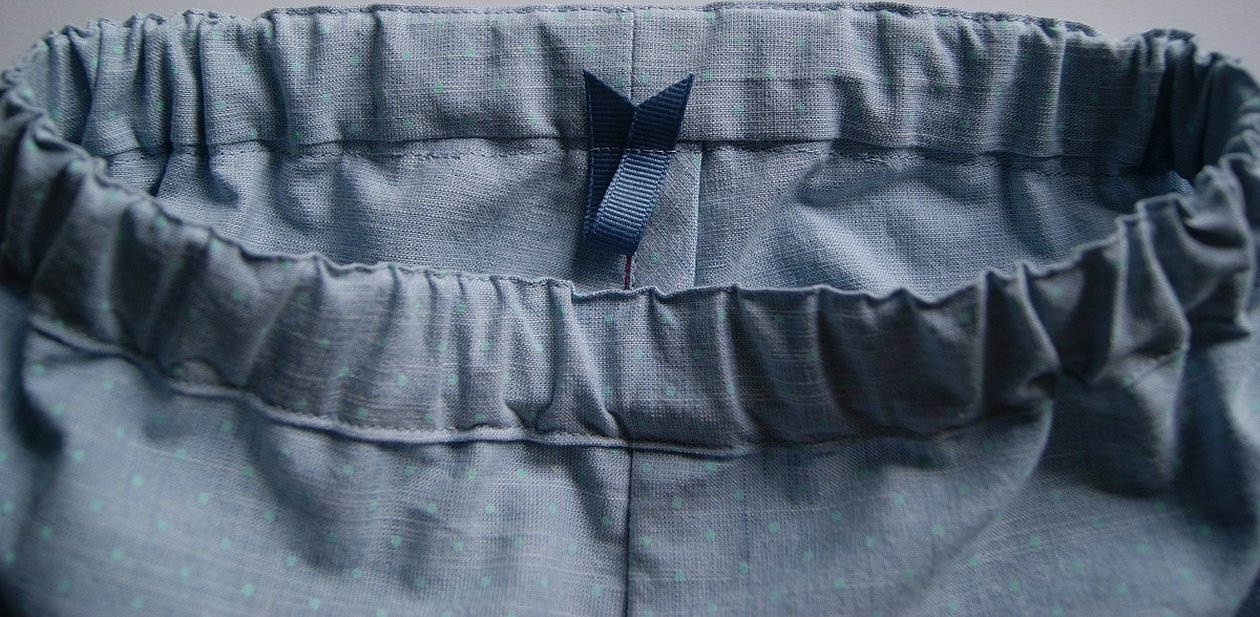
Then you need to switch the sewing mode of the sewing machine to zigzag. If the machine is multifunctional, then you need to select "elastic zigzag". You need to sew the elastic closer to the line of the upper seam.
Elastic band under the drawstring
Many needlewomen wonder how to sew elastic to fabric so that it stretches. However, most people think that there is only one most convenient way to do this - using a zigzag stitch. There is another good method - insert an elastic band under the drawstring. A drawstring is a strip of fabric that is sewn over the elastic. It can be either small or large, depending on the working area of the material.
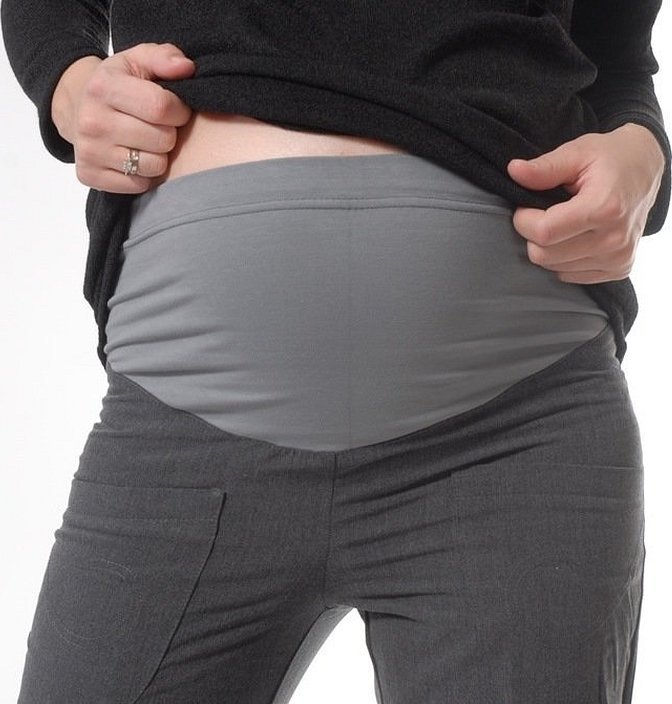
Before starting work, measure the required length of the elastic band and the same amount of fabric. The material is stitched in the form of a "pipe", then the end of the elastic band is pierced with a pin and passed through the drawstring. The edges are connected and processed.
This method is well suited for sewing sportswear, children's clothing, and items for pregnant women. The elastic will not pull or rub the skin too much, and it will also help avoid gathering of the material and unnecessary folds. Therefore, with the help of the drawstring, you can sew clothes from thick and coarse fabrics, such as calico, cotton and jeans.
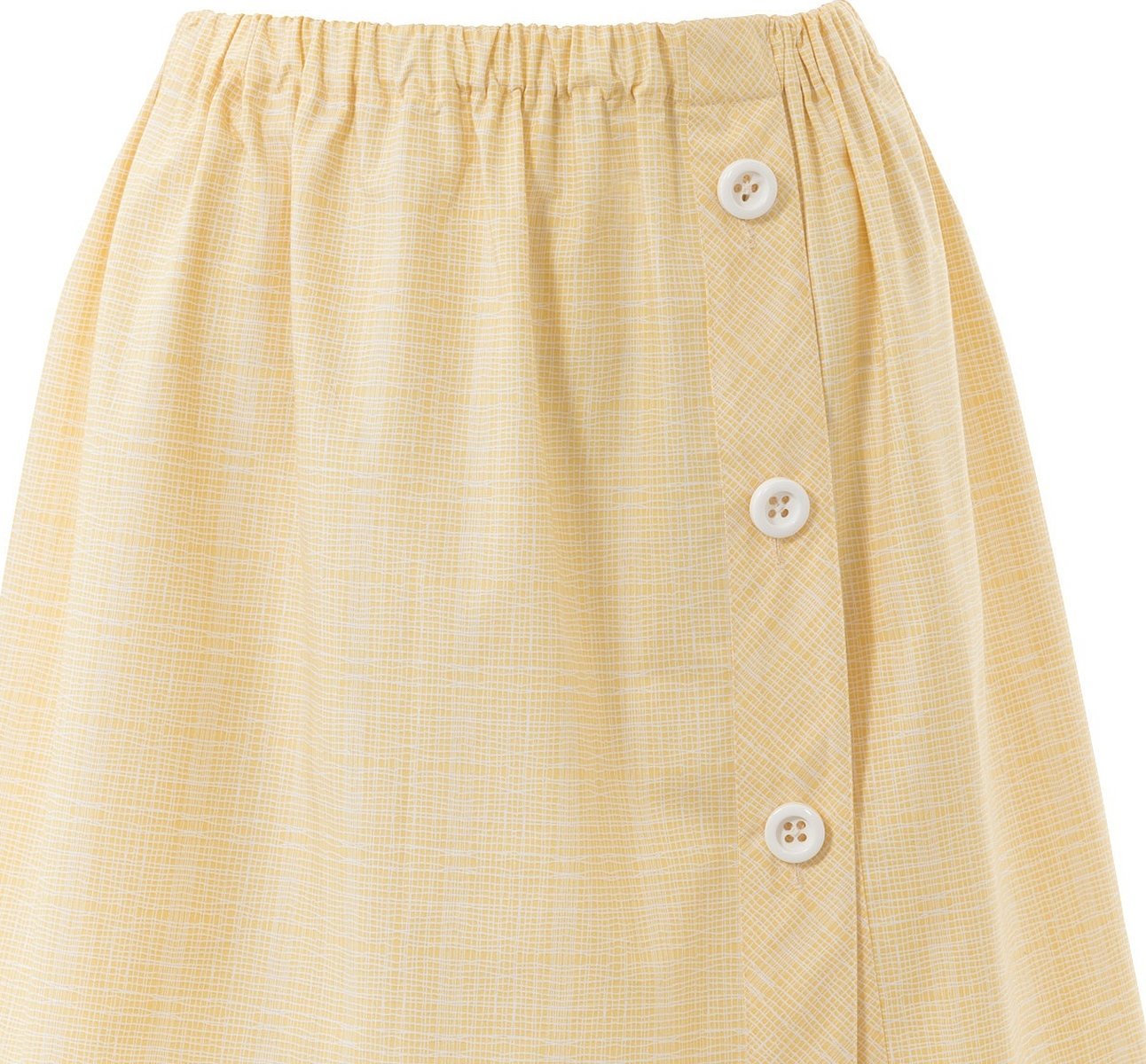
Please note! If you treat clothes with a drawstring on the waist, you can even do without a button; this method is used to repair clothes for pregnant women and children.
Using a hat elastic
It is recommended to sew the hat elastic with a zigzag stitch on the inside of the garment. With this method, you should not stretch the elastic band, as it will move freely on the garment itself.
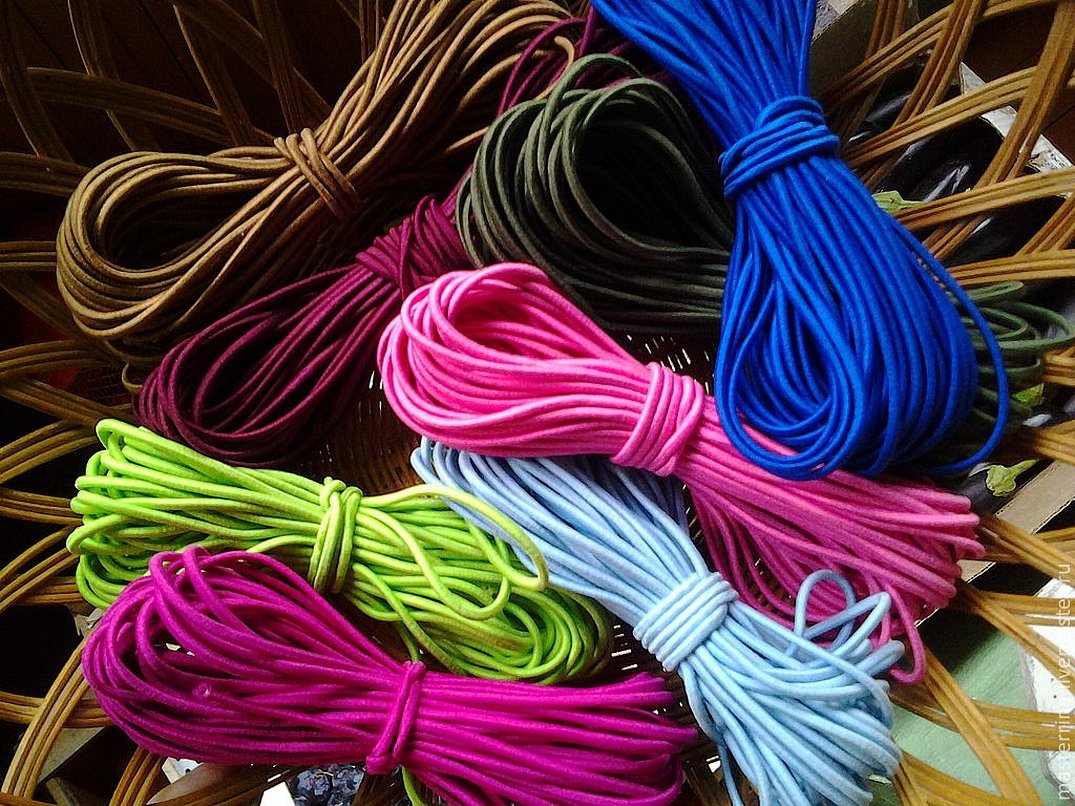
For your information! This method cannot be performed with a regular sewing machine, as it requires a special type of foot. Ultimately, the stitch width must be the same size as the foot.
How to sew elastic into jeans at the bottom of the leg
In some cases, it is necessary to sew elastic into the lower part of the leg, this is especially relevant for sportswear. To begin, take a 3-centimeter wide tape and a machine with a zigzag sewing mode. Connect the ends of the elastic and sew. Then attach it with pins to the inside of the leg. Sew along the edge of the fabric and process the edges with an overcast stitch.
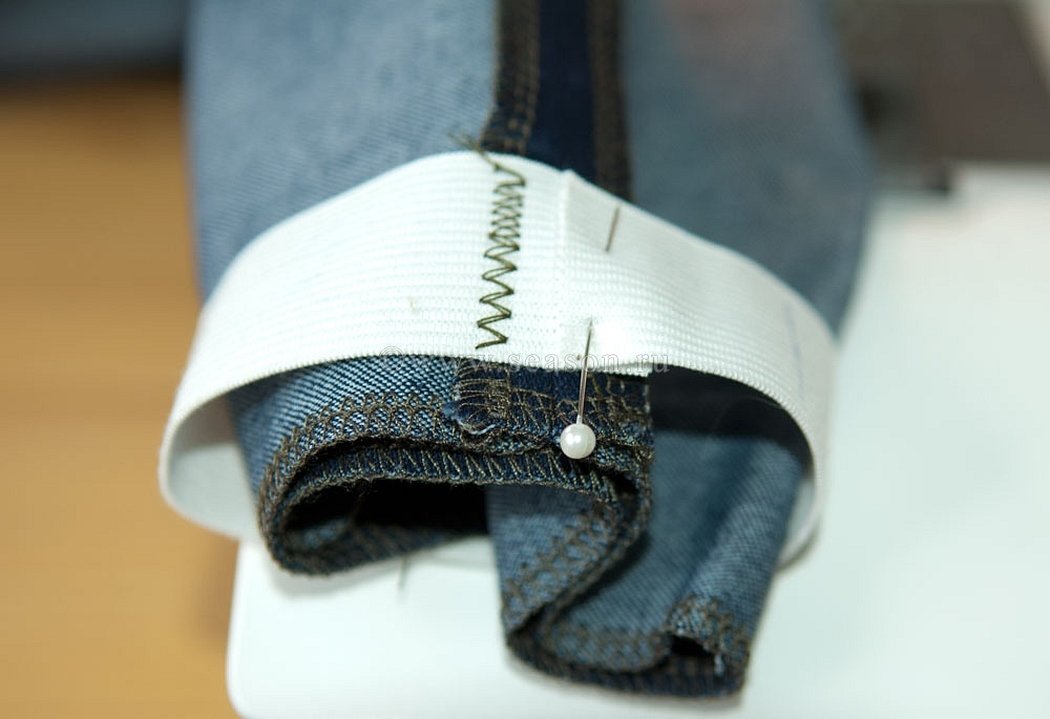
Now the edge of the leg together with the elastic is folded inwards and fixed with pins for easy sewing. The knitted seam is set on the machine. The product should be sewn at a distance of 1.5 to 3 centimeters from the edge.
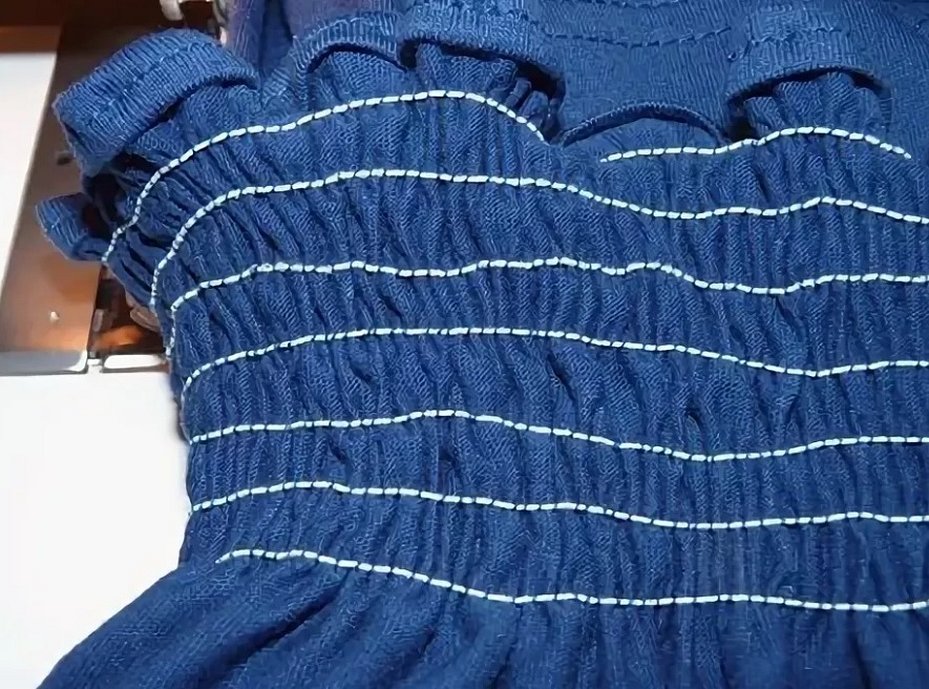
Sewing elastic into clothing is not that difficult, because there are many ways to do it. Not all methods are suitable for certain types of products, and the structure of the fabric can also affect the quality of the work. All this should be taken into account before you begin the process of sewing in elastic.




